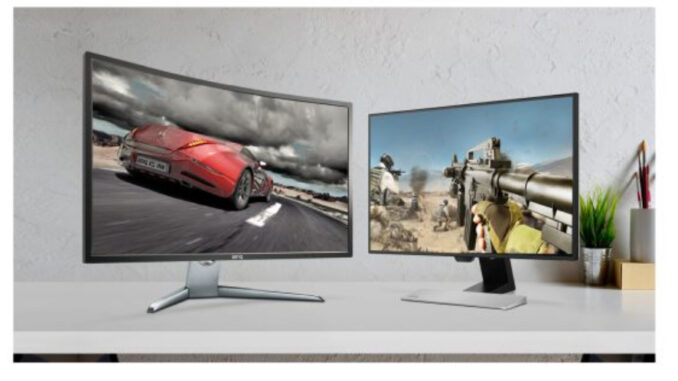
Welcome to the battle of screens! In a world dominated by technology, the choices seem endless when picking the perfect monitor for your needs. But fear not, fellow tech enthusiasts, for today we dive into the age-old debate: Curved vs Flat Monitors.
These two contenders have been duking it out in the market, each boasting unique features and benefits. Whether you’re a creative professional seeking an immersive experience or a casual gamer looking for lightning-fast visuals, choosing between curved and flat monitors can be quite the problem.






So grab your popcorn (or pixels?) as we explore both sides of this epic showdown. Strap tight because this will be one wild ride through resolution realms and display dimensions! Are you ready? Let’s go!
Pros and Cons of Curved Monitors
Curved monitors have gained popularity recently, but are they worth the hype? Let’s look at the pros and cons of curved monitors to help you make an informed decision.
One of the most significant advantages of curved monitors is their immersive viewing experience. The screen’s curvature mimics the natural curve of your eyes, providing a wider field of view and reducing eye strain. This can be especially beneficial for gamers or those who spend long hours in front of their screens.
Another benefit is enhanced depth perception. The curved shape creates a sense of depth, making images appear more realistic and captivating. Whether watching movies or editing photos, this added dimension can significantly enhance your visual experience.
However, there are some downsides to consider as well. One drawback is that curved monitors are more expensive than their flat counterparts. If budget concerns you, flat monitors may be a more cost-effective option.
Additionally, regarding image distortion, some users report that certain angles or distances from the screen can cause slight distortions on curved displays. While this might only be noticeable to some, it’s something to remember if precise color accuracy is essential for your work.
Flat monitors may offer an advantage regarding desk space utilization as they take up less space than their curved counterparts, which require larger surface areas due to their unique shape.
Choosing a curved monitor depends on your preferences and specific needs. If you prioritize immersion and enjoy visually stunning experiences with higher price points in mind, then a curved monitor could be an excellent choice for you! However, if budget constraints are significant or accurate, color representation takes precedence over immersion effects, opting for a flat monitor would be more appropriate.


Leave a Reply